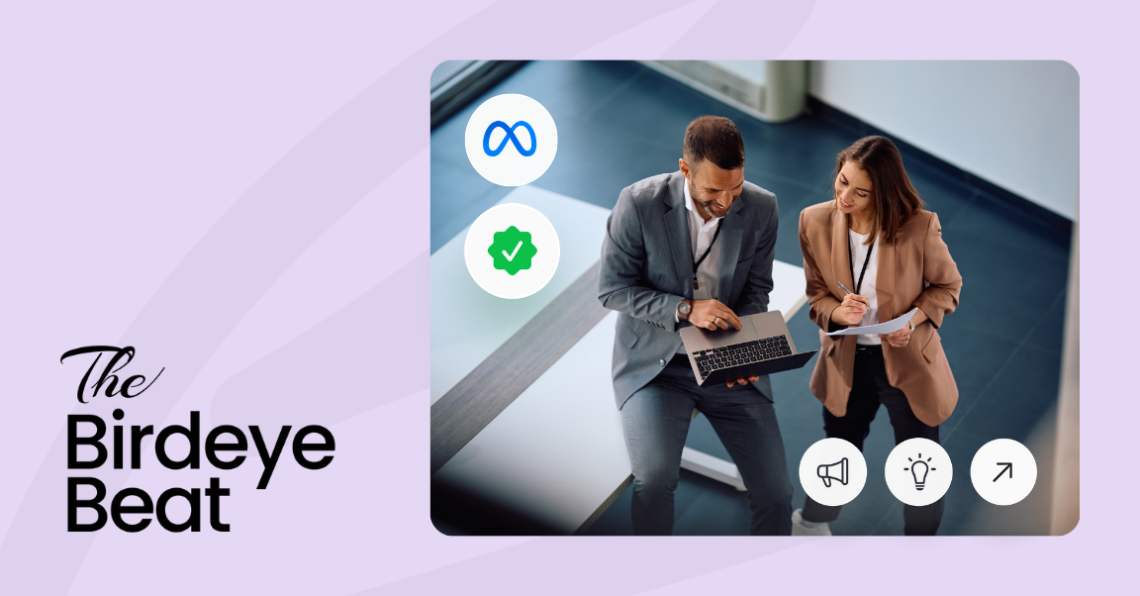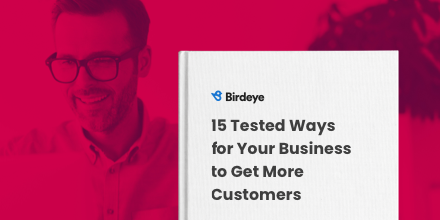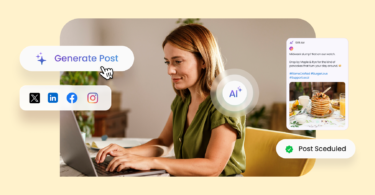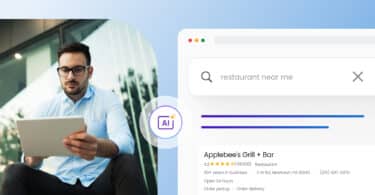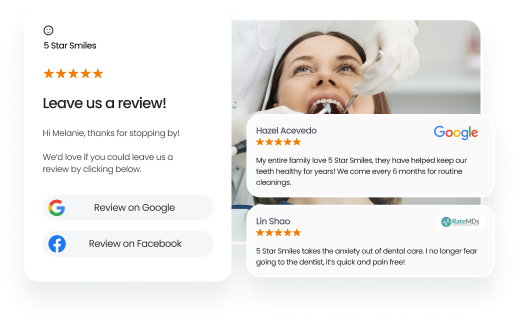Meta is changing the rules again, this time with a clear message to brands: get verified or get left behind. With new features rolling out under its Meta Verified for Business program, the company is doubling down on trust, attribution, and visibility.
These are not just small tweaks. They are strategic nudges, some subtle, some not, that make one thing obvious: the cost of staying unverified on Meta platforms is about to get a lot higher.
In this blog, we will unpack the two newest updates, explore how they’re likely to impact your brand’s visibility and engagement, and outline what businesses should do now to stay ahead.
Table of contents
What is Meta Verified for businesses?
Meta’s latest updates include two significant additions to its paid verification service:
- A new “Request Original Credit” feature for content attribution
- In-app warning labels for users engaging with non-verified business accounts
Let’s break these down.

1. Request credit for original content
Meta is now letting verified business accounts tag their posts as “Original,” giving them a way to formally claim ownership over branded content. Once this tag is applied, any reposts of that content across Facebook or Instagram will automatically link back to the original creator’s profile.
What this means for businesses:
If your brand produces shareable content, like infographics, educational reels, customer stories, or even UGC-style campaigns, this tool ensures that your profile is credited every time the content is reused.
It also opens up some interesting new engagement possibilities. For example, imagine running a user-participation campaign where followers remix your branded content. With the “Original” tag, every remix or repost becomes a new touchpoint that leads back to your business.
This feature is now available as a toggle in the post creation interface, but only for Verified accounts.
2. Warning labels for non-verified businesses
In a more aggressive move, Meta is also testing a new in-app warning system that alerts users when they’re about to engage with a non-verified business account.
According to Meta:
“We are testing new in-app education that more clearly tells people when a business account is not yet Meta Verified.”
In short, if your business is not Verified, visitors might see a pop-up or label suggesting your account may not be trustworthy. The warning could appear when users try to follow, message, or interact with your profile, placing immediate doubt in the user’s mind before they even engage.
Why it matters:
This could have a major impact on conversion rates, lead generation, and brand perception, especially for small businesses that rely on trust-driven actions like DMs or link clicks.
Why Meta is doing this
The move is strategic, perhaps even a bit sneaky. With less than 8 million people and brands signed up to Meta Verified so far, Meta is clearly looking to drive more uptake. These new features act as both a carrot (more reach and attribution) and a stick (warnings for non-verified profiles).
And while “verification” used to be reserved for notable figures or entities, it’s now a paid subscription service, currently priced at:
- $21.99/month: For verification of one business profile on either Facebook or Instagram.
- $34.99/month: For verification of both platforms (Facebook and Instagram) as a bundle.
Unlike other platforms (X), Meta does still require legal documentation for business verification. So there’s at least some legitimacy behind the process.
Still, these updates raise some questions about fairness and transparency. Is it ethical to penalize businesses for not subscribing to a paid service? That’s up for debate, but from a marketing standpoint, the writing is on the wall: Verified accounts are getting a clear platform advantage.
The real benefits of Meta Verified

If you are on the fence about subscribing, here’s what Verified businesses are actually getting:
1. Increased credibility
The blue badge now signals to users that your business has passed Meta’s verification process, helping to ease doubts and reduce drop-off at the point of engagement.
2. Boosted visibility
Meta says Verified accounts receive better in-feed recommendations and appear higher in search results. That means your content is more likely to be discovered organically.
3. Original content attribution
The new “Request Original Credit” tool ensures your content efforts pay off long-term, even as posts are reshared or remixed by others.
4. Protection from impersonation
Meta offers impersonation monitoring for Verified accounts, helping you defend your brand against copycats or scams.
5. Access to human support
Business accounts with verification gain access to live customer support, a significant upgrade for resolving platform issues quickly.
Altogether, these benefits make Meta Verified less of a cosmetic badge and more of a practical tool for credibility, reach, and brand protection.
What your business should do now
Whether you are a single-location brand or a multi-page enterprise, these changes mean it’s time to revisit your Meta strategy.
1. Start the verification process
To apply for Meta Verified:
- Complete your Facebook and/or Instagram business profile
- Submit legal documentation matching your brand name
- Upload your official logo and contact details
- Apply through your Meta dashboard
- Wait for approval (usually 2–5 days)
Remember: Unverified pages may now show warnings, so even a short delay could affect trust and engagement.
2. Tag your content for credit
Once Verified, use the “Request Original Credit” toggle on:
- Branded campaigns
- Educational content
- Promotional graphics or videos
- UGC reposts
This builds a reliable trail of attribution and improves your discoverability as others share your content.
3. Unify verification across locations
If your brand operates multiple pages (franchise, regional, language-specific), ensure every page is Verified. One unverified location could trigger warnings that damage the entire brand’s perception.
Create a standard verification SOP to ensure consistency.
4. Measure the impact
Track how Meta Verified affects:
- Follower growth
- Website click-through rates (CTRs)
- Engagement (likes, comments, shares)
- DMs and lead inquiries
- Brand mentions and UGC
Early reports suggest that Verified pages are seeing double-digit improvements in visibility and reach, even without increasing ad spend.
How Birdeye Social AI supports verified businesses on Meta

As Meta introduces new tools to strengthen trust and content ownership, platforms like Birdeye can help businesses get more value from their Verified status.
Birdeye Social AI provides support in key areas that align with Meta’s evolving priorities:
- AI-powered review and message responses: Automatically reply to customer reviews and messages on Facebook and Instagram, ensuring consistent and timely engagement.
- Smarter content scheduling: Use AI to determine the best times and formats for posting, helping Verified content reach more people.
- AI-driven brand protection: Detect fake reviews and suspicious behavior to protect your brand reputation, an increasingly important signal on Meta platforms.
- Real-time social listening: Track brand mentions and sentiment to respond quickly and stay aligned with audience expectations.
- Data-backed engagement insights: Leverage AI analytics to improve how your content performs and how customers interact with your brand.
- Multi-location consistency: Support Verified pages across all locations with a unified, AI-powered reputation strategy.
While Meta continues to shift toward a more trust-centric experience, pairing its Verified tools with AI-powered social management can help businesses stay ahead of the curve.
Final thoughts
Meta is clearly shifting toward a “pay-to-be-trusted” model, and while that may raise eyebrows, it also creates a powerful advantage for proactive businesses.
These new tools, especially the original content credit and warning labels, are not just add-ons. They are building blocks for a future where identity, trust, and content ownership define success on Meta platforms.
If your business is not Verified yet, now is the time to act. Not only to avoid being flagged, but to stay ahead of competitors who haven’t caught on.

Originally published
